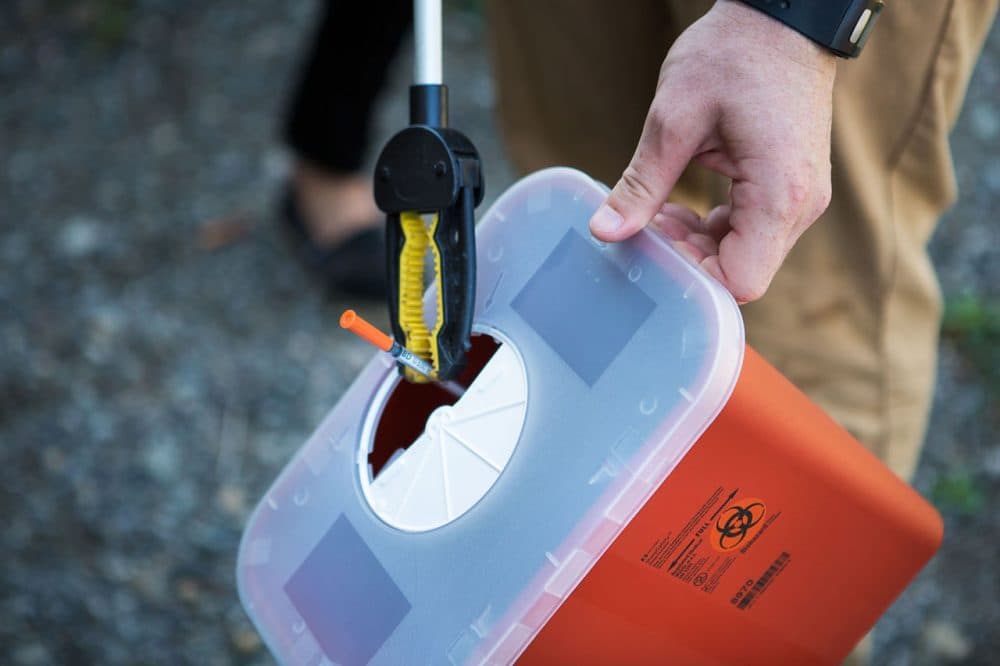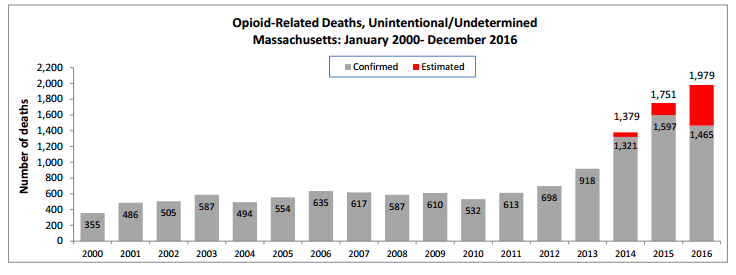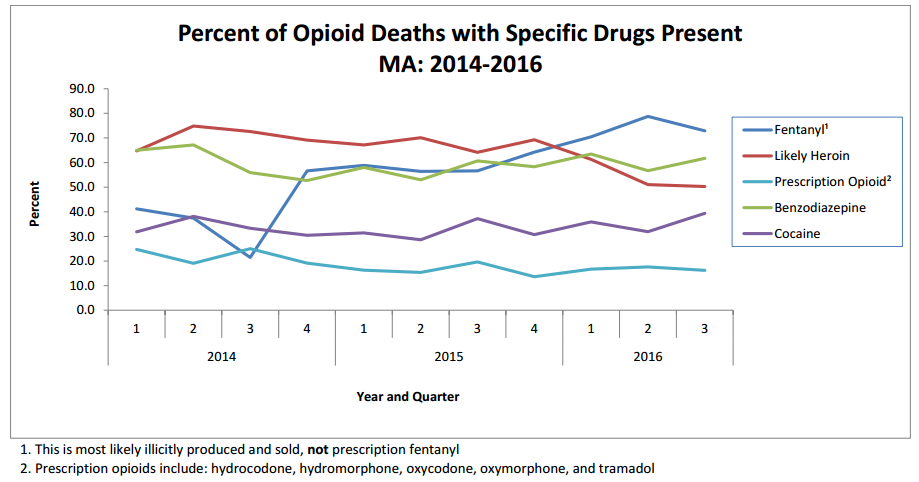Advertisement
Overdose Deaths Likely Rise To New High In Mass.

You may have joined the collective gasp when overdose deaths, primarily from heroin, topped 1,000 in Massachusetts in 2014. Just two years later, state projections out Friday show nearly 2,000 men and women died as a result of an overdose in 2016.
But now, it's not heroin jumping out on toxicology reports, it's fentanyl. This synthetic opioid was present in 75 percent of the confirmed deaths in 2016.

Fentanyl is killing more people because it is up to 50 times more powerful than heroin. Grains of the drug mixed into bags sold as heroin or just dope can trigger immediate respiratory failure. Regular drug users say a fentanyl high wears off quickly, so they take anxiety meds or cocaine to extend the high.
Check out the green and purple lines below. Risk of an overdose is four times higher for those who ingest a combination of opioids and other drugs, according to the state Department of Public Health (DPH).

DPH Commissioner Dr. Monica Bharel calls this update sobering but not unexpected. She says there are reasons to hope the epidemic is slowing down:
- The rate of increase in overdose deaths was not as high from 2015-2016 (an estimated 24 percent) as it was from 2013-2014 (44 percent).
- EMS use of naloxone, the overdose-reversing drug, climbed 47 percent in the first three quarters of 2016, as compared with 2015.
- The state has added more than 500 substance use treatment beds since 2015, certified more than 1,900 sober home beds, and has funded the training of more than 800 recovery coaches.
- The number of opioid prescriptions written in Massachusetts dropped 15 percent from 2015 to 2016.
"Part of our effort in responding to this opioid epidemic has been around prescription safety," Bharel said, "and this shows that we're starting to see a decrease in that entry point."
State leaders are cautious about claiming they've got a handle on the epidemic. New and even more deadly forms of fentanyl are shipped into the country every day.
Advertisement
Bharel says doctors, nurses and patients must stay focused on prevention — making sure no one gets an opioid prescription unless it's absolutely necessary.
"We are working to build a foundation of prevention that will serve us for a long time, and we really have to continue our comprehensive approach, no matter how long it takes," she said. "Ending an epidemic takes time."
These latest numbers show that between five and six people in Massachusetts are dying every day. Many more overdose and survive.
My 2 cents: If you don't know how to use naloxone, find a training and pick up a kit. If you have older teens, ask them if they want to be trained. If you see someone who is not breathing, start CPR and rescue breathing. Brain damage begins within five minutes of oxygen deprivation. Be prepared.
